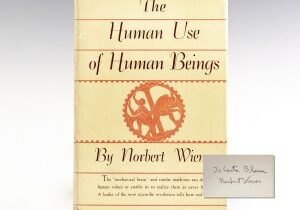Sylvia Plath was born in the fall of 1932 in Boston, Massachusetts to parents of Austrian and German descent. Destined to become one of the foremost writers of her time and genre, she was born into an intellectual household. Her father was an entomologist, professor of biology, and scientific author. Plath herself began showing her artistic and intellectual abilities at a very young age, proving herself to be a talented artist in addition to her literary ambitions. She won an award for her paintings from the Scholastic Art & Writing Awards in 1947 and continued developing her creativity in subsequent years, notably keeping a journal and delving into early poetic aspirations.
Unfortunately, Plath is as well known today for her long string of misfortunes, trials, and tribulations as she is for her art. This began in 1940 with the death of her father only a week after her eighth birthday. One of her earliest poems, “Electra on Azalea Path,” was inspired by a visit to her father’s grave.
In 1950, Plath attended Smith College, a private women’s liberal arts college, and immediately showed great intellectual success and capability. By her third year, she became an editor for Mademoiselle Magazine, which relocated her to New York City for a month. These events would later go on to inspire The Bell Jar, her best-known work and a highly autobiographical narrative.
Her depression, a lifelong struggle, intensified greatly during these years and she began showing alarming signs of her suffering mental health, including bursts of self-harm and a first suicide attempt by taking her mother’s sleeping pills. This resulted in electroconvulsive therapy, which proved to be relatively useless, and she soon found herself admitted to McLean Hospital. Upon making her successful (albeit temporary) recovery, she returned to college and graduated Summa Cum Laude.
Plath’s first collection, The Colossus, was published in 1960. It was well-received and quickly gained her a great deal of respect and admiration, particularly from fellow writers, editors, and publishers. It included many of her best-known poems, such as “I Want, I Want” and “The Beekeeper’s Daughter.” The only collection published during her lifetime, The Colossus and Other Stories, contains many of Plath’s most highly regarded confessional poems, including “The Manor Garden”, “A Winter Ship”, “Moonrise”, “The Hermit at Outermost House”, and “The Beekeeper’s Daughter.”
August of 1961 saw the completion of her most famous work, The Bell Jar. Though it would not be published until 1963 and was not immediately met with critical acclaim, it would go on to become a cornerstone work of feminist literature, cementing Plath as one of the most important voices in the genre. It chronicles the crack-up of Esther Greenwood: brilliant, beautiful, enormously talented, and successful, but slowly going under–maybe for the last time. Plath masterfully draws the reader into Esther’s breakdown with such intensity that Esther’s insanity becomes completely real and even rational, as probable and accessible an experience as going to the movies. Such deep penetration into the dark and harrowing corners of the psyche is an extraordinary accomplishment and has made The Bell Jar a haunting American classic.
The first English publication The Bell Jar was released under the pseudonym Victoria Lucas because Plath’s publisher, Heinemann, had concerns that the novel’s strongly autobiographical nature could result in libel actions. The name Victoria Lucas was initially also that of the protagonist in Plath’s original draft of The Bell Jar, but it was changed to Esther Greenwood at the publisher’s suggestion with Victoria Lucas retained only as the pen name. The book was not a commercial success during Plath’s lifetime as she was still a relatively unknown author.
The final chapters of Plath’s tumultuous life produced her greatest stroke of inspiration, resulting in the poems for which she is best known to this day. “Lady Lazarus,” “Daddy,” and “Ariel” were all written during this time, eventually landing in her posthumous 1965 collection of poems titled Ariel.
During this time, Plath’s mental health was about to embark upon its final spiral. In June of 1962, she drove her car off the side of the road into a river in a failed suicide attempt. Her doctor prescribed her anti-depressants and assigned her a live-in nurse, but these efforts proved to be too late. In February of 1963, she tragically took her own life at the age of 30, leaving behind her two young children and multiple works yet to be published. These poems eventually found their place on bookshelves in the form of various collections, including Ariel, Crossing the Water (1971), and Winter Trees (1971).
Despite the insurmountable darkness of Plath’s life, it is difficult to deny the sharp perception and beautiful artistry that it produced. Her poems are considered landmarks amongst both American and feminist literature and her acceptance and self-awareness of her mental illness resulted in a degree of reflection and insight from a female perspective rarely seen in the mid-20th century. Though she never lived to see the wide-reaching success of her works, she is beloved and celebrated to this day as a unique and fascinating voice in literature.
The Bell Jar was republished after Plath’s death in London in 1966 and New York in 1971 with Plath acknowledged as the title’s true author. No longer the first novel of an unknown author, its status was elevated to the brilliant and haunting autobiography of a tragic and celebrated poet.
Browse our complete collection of Sylvia Plath’s works here.
















